 Finding a better job and making the right decision is not easy. Can the 5-step decision making process help?
Finding a better job and making the right decision is not easy. Can the 5-step decision making process help?
Most definitely!
Here is a real life case study showing how the 5-step decision making process was used in finding a better job.
Better Job = a more enjoyable, less stressful job in addition to good paying.
Read on to learn how it all worked together for great results…
Finding a Better Job – The Challenge
 Several years back finding a better job was a top priority. Where I was at the time was not helping me achieve my larger goals so it was time for a change.
Several years back finding a better job was a top priority. Where I was at the time was not helping me achieve my larger goals so it was time for a change.
I ended up landing what I thought was a good job.
Boy, was I ever wrong.
It was one of the worst decisions I’ve ever made.
In my attempt to avoid another job selection disaster, I decided to put into play the decision making principles I had discovered from my own research.
That decision (forgive the pun) paid off… big time.
The 5 Step Process I Used in Finding a Better Job
Here’s exactly what I did, step-by-step, in the process of finding a better job. I used the 5-step process found here.
Step #1 – Entertain Openness.
Scientific research confirms that we humans tend to fool ourselves into thinking we are open-minded toward all our options.
I am as guilty as anyone in this area.
Two ways I can be close-minded about job hunting options include—
- Seeing the future through the lens of my past. It is easy to think, “I have done X type of job(s) in the past, so X is the type of job I need to do in the future.”
- Subconsciously deciding ahead of time which direction I want things to go (often an unspoken desires and preference) and steering myself toward that decision. Other options get ignored.
This time, I forced myself to be open to a variety of options, even if on the surface they seemed unlikely or dumb or not “the best.”
Actions = Professed Beliefs

Courtesy: Britt Reints
Since I profess to “follow” God for my life, I wanted to make sure I was open to the options He wanted me to consider. Too often, I bring him the ones I think are best… and then ask him to bless one in particular.
Throughout the whole process I tried to be open to options and opportunities that weren’t obvious (or on my list) or beginning to emerge. Who knew how the process would ultimately play out? I sure didn’t. All the more reason to stay open.
Incidentally, the job I ended up taking was not one of the options that seemed likely when I started the process. If I had not been open from the beginning, it is likely I would have missed this opportunity entirely.
Step #2 – Expand Your Options
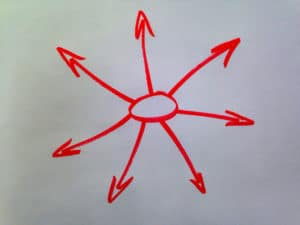
Courtesy: David Mulder
The first step is more of an attitude of letting go of preconceived ideas. This second step is more of the process of fleshing out as many choices as possible.
This is a hugely important step.
Research has proven that you will have a better outcome if you are examining many different options at the same time. As Chip and Dan Health point out in their excellent book “Decisive,” the lowest odds of success are found in deliberating on a single option. They warn people never to start the decision making process with these words “Or Not” (as in “Should I take this particular job, or not?”).
A Great Idea… That (Initially) Seems Hard To Do
The idea of expanding your options can be a difficult step in the process. Often, you can only think of a few options initially. For me, I had worked in marketing for several years, so I could only think of a few obvious options.
This is where you must take time to employ the Panoramic Technique. Like looking through a camera, instead of focusing on the most obvious items directly in front of you, you do a 360-degree sweep of the landscape and consider everything.
Here are 2 methods I used to expand my options:
- Brainstormed options (with a twist). Before beginning to brainstorm, I totally removed the obvious/current options. When the default, go-to options were taken away, I was forced to think of other options I would have to consider.
- Asked people who know me for their perspective on my gifts and skills. They will see the world (and me specifically) differently than I would. From there I tried to match up abilities with obvious job types where those skills sets were valuable.
Important Questions to Ask Yourself
There were also two really important questions to consider as I evaluated all my “potential” options:
- What can I do vs. what do I want to do (what energizes me)?
Just because I can do something doesn’t mean it is one of my strengths or something I enjoy. All things being equal, finding a better job that is within the sweet spot of my abilities was my goal. I have had jobs where I operated in a non-strength area and it was incredibly demotivating and draining.
- Does this option bring me closer or take me further away from my bigger dream/purpose?
Finding a better job was important, but I had certain larger goals for my life and my family. For example, some options were very appealing on the enjoyment level, but violated an important goal—sufficient income to provide adequately for the family. Why take a job that has built-in financial stress?
Other options satisfied the income requirement but required long hours and high stress tolerance. Although you often have to do what you have to do to provide for your family, in my book this was a strike against that option.
Laying Out All My Options (to compare/contrast)
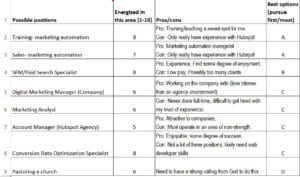
I created a document where I put all kinds of possibilities down, scored them, then sorted them so the “best” options were pursued first/most.
Click here to download this template
Additional Options Easily Overlooked
A final thing I did to multiply my options was looked for ways to combine parts of options, particularly things I did well.
 In fact, I found a combination that provided a unique value and opportunity to the marketplace. In other words, most employers hired A or they hired B, but they rarely hired a person to do A/B. I saw how the integration of these two unique skill sets actually worked together to create additional value (sum of the whole is greater than the parts).
In fact, I found a combination that provided a unique value and opportunity to the marketplace. In other words, most employers hired A or they hired B, but they rarely hired a person to do A/B. I saw how the integration of these two unique skill sets actually worked together to create additional value (sum of the whole is greater than the parts).
As a result, one direction I pursued was pitching certain marketing agencies on this overlooked value… and how it can help them. I included this idea in my cover letter, with a link to a document (5 Reasons A/B Can Help Your Agency Increase Profitability).
Steps #3,4 – Expose Your Bias & Escape Your Emotions
[For the sake of space, I have combined the next 2 steps] 
This step is important for weeding out self-deception and exposing your deeper motives, fears and desires toward choices.
If you don’t do this step, you will end up choosing an inferior option. How? Because you avoid good options based on unfounded fears, and/or you choose other lousy options based on unrealistic expectations.
Decision making research reveals we have a lot of hidden bias we cannot see. What unfounded fears (overly negative) or fairy tale ending (overly positive) options might be secretly sabotaging my choices? I had to expose those… or risk accepting a mediocre job.
Expose Bias Technique #1 (Turn it upside down)
One potent question to ask yourself that combats negative bias and emotions toward certain options: “What if my least favorite option were actually the best one? What data might convince me of that?”
For example, one option I was leery of was sales. Even though I had done it before, and had fair success, the thought of feast or famine income was not appealing based on having to provide for a large family. Also, the thought of having to get treated like a sales person every day (rejection, avoidance of me) was not a pleasant thought.
But, what would this option have to look like to be the best option? If I found a sales position out there that had—
- Low turnover with high employee satisfaction
- Was built around relational sales not transactional sales
- Sold things I truly believed in
- Had stable income
… I’d be open to it.
As a result of this technique, I left the sales option in the mix… but only those opportunities that met these criteria.
Expose Bias Technique #2 (Over optimism)
Another bias we have is being overly optimistic about certain options. I am terribly guilty of this. Here’s a helpful solution that often removed the rose colored glasses so I could see reality—job/company rating sites like Glassdoor.
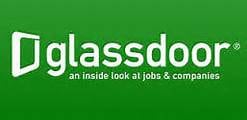 I can’t tell you how many times I would find a job listing for a company that I thought, “Wow, that sounds good!” Then, I would check Glassdoor to see what current and former employees are saying.
I can’t tell you how many times I would find a job listing for a company that I thought, “Wow, that sounds good!” Then, I would check Glassdoor to see what current and former employees are saying.
The truth would be in stark contrast: disgruntled employees, high turnover, treated like a pack mule, etc.
As a result, I wouldn’t even waste my time applying for that position. What a time saver! What a life saver!
Expose Bias Technique #3 (The reason beneath the feelings)
I took time to examine more closely certain job opportunities that excited me… or filled me with dread. Why? What was going on below the surface that I wasn’t seeing.
One hidden criteria I had not fully recognized and was important to me was a strong telecommute component. This was worth 10-15 hours a week (eliminating the commute and get ready time). For me, finding a better job meant adding this to my assessment of potential jobs.
Expose Bias Technique #4 (Dip your toe)
Sometimes you just can’t know things in advance. So, how can you combat the positive or negative bias? If possible, dip your toe in water and try out the option first.
There are some situations where this approach is possible and is viewed as a win-win for you and for the employer.
I offered myself as an independent contractor using this value to the potential employer:
- It will save you money because you don’t have to offer me benefits
- It will provide you financial flexibility because you can hire me on a part-time basis to meet immediate needs without the financial commitment to having full-time work available.
- You can try me out to see if I am a fit for your organization rather than making the commitment first and then going through the messy HR path if things don’t work out.
In the process of finding a better job, this tactic let me see if the role and the company were a good fit for me. Why assume a position is good or bad, when you can know for sure? I ended up doing part-time contract work for about 60 days while I kept looking. It helped with cash flow and let me find out if I liked working for a particular company.
Step #5 – Prepare For The Worst
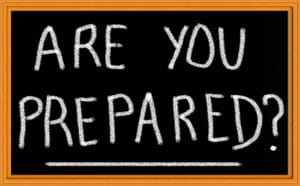 This final step is an acknowledgment that all the wisdom and techniques in the world will not guarantee that your choices for finding a better job will turn out as you hoped. We still have limited sight into the future and unseen variables that affect the outcome.
This final step is an acknowledgment that all the wisdom and techniques in the world will not guarantee that your choices for finding a better job will turn out as you hoped. We still have limited sight into the future and unseen variables that affect the outcome.
That said, there are things you can do to prepare as much as possible for events you don’t want to see happen… and to limit the downside
For me, two techniques are particularly valuable:
- Premortem– This is examining the situation like you would a dead body, but instead of looking backwards at what killed the patient, you look ahead at what might go wrong… and then develop contingency plans to deal with those events.
What if, after careful consideration, the position and/or the company I choose doesn’t turn out like I had expected? A premortem helps to develop a plan ahead of time (outside the emotions of the situation) to improve the situation, and even create an exit strategy.
- Tripwire– These are triggers you set into place if certain conditions occur (or don’t occur).
For example, if I was promised a certain income (or some other expected condition), I would set a tripwire to trigger at 90 days to have an honest conversation with the company if this had not been fulfilled… and to set a definite drop-dead date to receive the promised income or I walk. I could also combine this with the premortem technique—at the first trip wire I begin to look for other options inside/outside the current company.
Fortunately, I did not need to follow-through with either technique because the position I obtained unfolded exactly as expected.
Results From Using The 5-Step Decision Making Process
- Obtained several excellent options: Because I was able to identify areas where I offered value to an employer (and which best used my experience, giftedness and passion), I was able to sell myself and my value to them more effectively. This occurred… even with companies not openly hiring. I used a highly customized cover letter and resume to accentuate my value to them. Plus, I was even able to pitch them on positions they hadn’t previously considered. The above approach led to a fairly high percentage of interest in me and several good options/offers.
- The position: I was able to land a position that fit me well (and was energizing to do). As a result, I excelled in it (which was good for me and for the company).
- The company (philosophy): Because one of my approaches was to pitch a company on the value of an A/B position, several companies demonstrated a great perspective… not seeing employees as round or square pegs, but as people… whose unique talents often warranted creating positions that fit the people (rather than the other way around).
- The company (criteria I needed to have): I found a company that offered those things of value to me—telecommuting, good salary, low stress, high employee satisfaction levels and low turnover rates.
Without following the above process, I likely would have only pursued a position similar to what I had previously… but in a different company. Groan.
I could have easily said yes to another option… and once again fooled myself into thinking “this time it will be different.” I didn’t fall for that this time.
What To Do Next
The decision making framework I used increased the odds of things turning out well for me. I encourage you to try the 5 step process for your next important decision. Just download the free ebook below!
Leave a comment below and let me know if you think this approach could help you. Better still, let me know if it works for you!
Do you know someone who could benefit from this article? Click on one of the share icons below to pass it on.


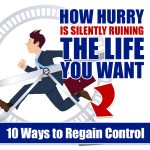






Please note: I reserve the right to delete comments that are offensive or off-topic.